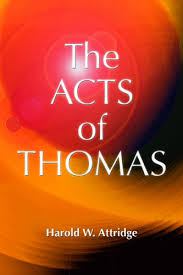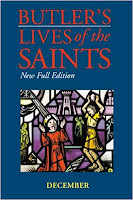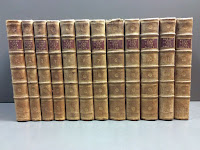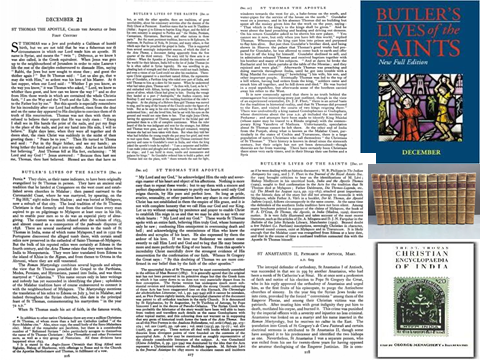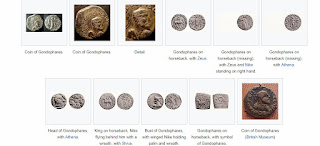ஜெருசலேமில் தான் வாழ்ந்தார்கள்
தோமோ நடபடிகள் கதை
கேரளாவின் செயின்ட் தாமஸ் கலக் களஞ்சியம்- "தோமோ நடபடிகள்"
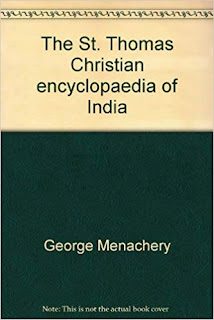
87 And when the apostle had said these things in the hearing of all the multitude, they trode and pressed upon one another: and the wife of Charisius the king’s kinsman Ieapt out of her chair and cast herself on the earth before the apostle, and caught his feet and besought and said: O disciple of the living God, Thou Art Come Into A Desert Country, For We Live In The Desert;
�As for as I could see from all the Shreds of Quotations presented by Prof. Kolangadan in this Volume, the antiquity of St.Thomas Tradition in South India cannot go beyond 13th Century. So for as direct and explicit support in favour of the St.Thomas Tradition in South India is concerned, I have No Doubt that the answer must be, None. Neither the Church Fathers nor the Apocrypal Acts say anything explicityly about Malabar.� Page 79
I quote from Rev.George Menachery Edited St. Thomas Christians Encyclopedia�,Vol-2, Article DID St.Thomas Really Come to INDIA- From a Doubter�s point of View by
Rev H.COMES. It explains-
�Heracleon- (II Century) is the earliest author to throw a light on St.Thomas's carrier; his grandparents might have known the Apostle. Now, discussing the problem of witness and blood martyrdom, he states in a casual way, as something well known, that Matthew, Philip, Thomas, and Levi(Thaddaues) had not met violent deaths. And Clement of Alexandria (150-211/16 A.D.) who quotes this Passage of Heracleon and corrects some of his ideas, does not challenge this facts.
It explains and analyses further in detail all other points and finally concludes as-
" For all these reasons it is our honest opinion, and thus we conclude, that Christianity was brought to India, not by St.Thomas, but by merchants, refugees and missionaries from Persia; that in this movement of Christianity towards India, Rewardshir, which was not only a great church, but also a great port, played an important part; that the St.Thomas Tradition itself may have been brought to Socotra to Konkan -Gujarat and to South India by these early settlers and missionaries from Persia; but that its ultimate origin may have been some of the regions near Palestine Christianized in the First Century." Page-24
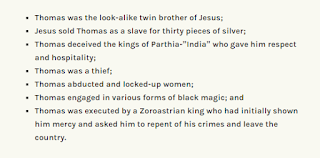
செயின்ட் தாமஸ் எனும் கதைநபர்வருகை ஆதாரம் என்பது 4ம் நூற்றாண்டு ஆரம்பகாலத்தில் புனையப்பட்ட "தோமோ நடபடிகள்" எனும் நூல்.
Former English Professor of St.Joseoph College, Trichy, Dr.Joseph Kolangodan wrote a book “The History of Apostle Thomas” and it has the total appraisal from a fellow Christian, Professor John Ochanthurthi, Dept. of History, Calicut University saying-“As the Well known Orientalist and Syrian Scholar George Every in his book “Christian Myths”(New York; Page-92)- India of this Legend (Acta THomae) is certainly not Malabar and may not be in the Indian Peninsula”
What is the Opinion about Acts of Thomas, in Catholic Church- Acta Thomae was composed in the Ist half of the 3rd Century AD in Gnostic Manichean circle with Encrastic tendencies. Page-411, Vol-3, New Catholic Encyclopedia
“Opinion seems to be Unanimously insupporting the Hypothesis that the whole or Greater part of the western section of the Kerala coast was once under waters and that the formation of the Land was due to some process of nature either gradual or Sudden.” Page-12
Rev.A.M.Mundaden says-
“Indian Tradition is clearly influenced by the accounts of the Acts of Thomas and also by the East Syrian Tradition.. Some of the elements of the Sacraments pf Confirmation may be regarded as details, which have crept in to the Account from the Portuguese Sources P.32
The so called details available are mostly the fruit of fertile imaginations, generously employed to fill the gaps and provide facile interpretation. P-3
Now I refer again Dr.Joseph Kolangodan wrote a book “The History of Apostle Thomas” and it has the total appraisal from a fellow Christian, Professor John Ochanthurthi, Dept. of History, Calicut University
“As for as I could see from all the Shreds of Quotations presented by Prof. Kolangadan in this Volume, the antiquity of St.Thomas Tradition in South India cannot go beyond 13th Century. So for as direct and explicit support in favour of the St.Thomas Tradition in South India is concerned, I have No Doubt that the answer must be, None. Neither the Church Fathers nor the Apocrypal Acts say anything explicityly about Malabar.” Page 79
“.. whole story which lies shrouded in Legends, fables, fictions and confusing details. Quiet often One has no other option but tto fall back on what is claimed as tradion. No wonder then that Speculations,Surmises and Presumptions have characterized many studies of the period. To avoid filling into such pitfalls… out of a large basket of all sorts of materials all claiming to be Tradtion-facts: Legends, Myths, wishful thinking, telescoping of events easy hormonisation etc., P-2
Ramban Song as per Church claims was composed in 17th Century. But one of the Nasrani Thomas Christian website says that Linguistically it can be dated to 19th Century.
Rev H.COMES. It explains-
“Heracleon- (II Century) is the earliest author to throw a light on St.Thomas’s carrier; his grandparents might have known the Apostle. Now, discussing the problem of witness and blood martyrdom, he states in a casual way, as something well known, that Matthew, Philip, Thomas, and Levi(Thaddaues) had not met violent deaths. And Clement of Alexandria (150-211/16 A.D.) who quotes this Passage of Heracleon and corrects some of his ideas, does not challenge this facts.”
It explains and analyses further in detail all other points and finally concludes as-
" For all these reasons it is our honest opinion, and thus we conclude, that Christianity was brought to India, not by St.Thomas, but by merchants, refugees and missionaries from Persia; that in this movement of Christianity towards India, Rewardshir, which was not only a great church, but also a great port, played an important part; that the St.Thomas Tradition itself may have been brought to Socotra to Konkan -Gujarat and to South India by these early settlers and missionaries from Persia; but that its ultimate origin may have been some of the regions near Palestine Christianized in the First Century." Page-24
http://www.newadvent.org/cathen/05282a.htm/
//The exact date of the introduction of Christianity into Edessa is not known. It is certain, however, that the Christian community was at first made up from the Jewish population of the city. According to an ancient legend, King Abgar V, Ushana, was converted by Addai, who was one of the seventy-two disciples. (For a full account see ABGAR.) In fact, however, the first King of Edessa to embrace the Christian Faith was Abgar IX (c. 206). Under him Christianity became the official religion of the kingdom. As for Addai, he was neither one of the seventy-two disciples as the legend asserts, nor was he the Apostle Thaddeus, as Eusebius says (Hist. Eccl., IV, xiii), but a missionary from Palestine who evangelized Mesopotamia about the middle of the second century, and became the first bishop of Edessa.//
and article titled ST. THOMAS THE APOSTLE- Written by Mr. Mathen Manathala says-
“This tradition has many contradictions and factual errors. First of all there were no Brahmins in the Malabar Coast until the eight century. Secondly, the places where he is supposed to have founded churches were non existent as those parts of the western coast were still under the Arabian Sea. Thirdly, ordination of Kassesos and “Rambans” was not practiced in Christianity until the first quarter of the second century any where in the world. The only written evidence to this Malabar tradition is found in the “Ramban Pattu” supposed to be written in early 17th century, but the language used denotes a much later time, sometime in the 19th century.”
